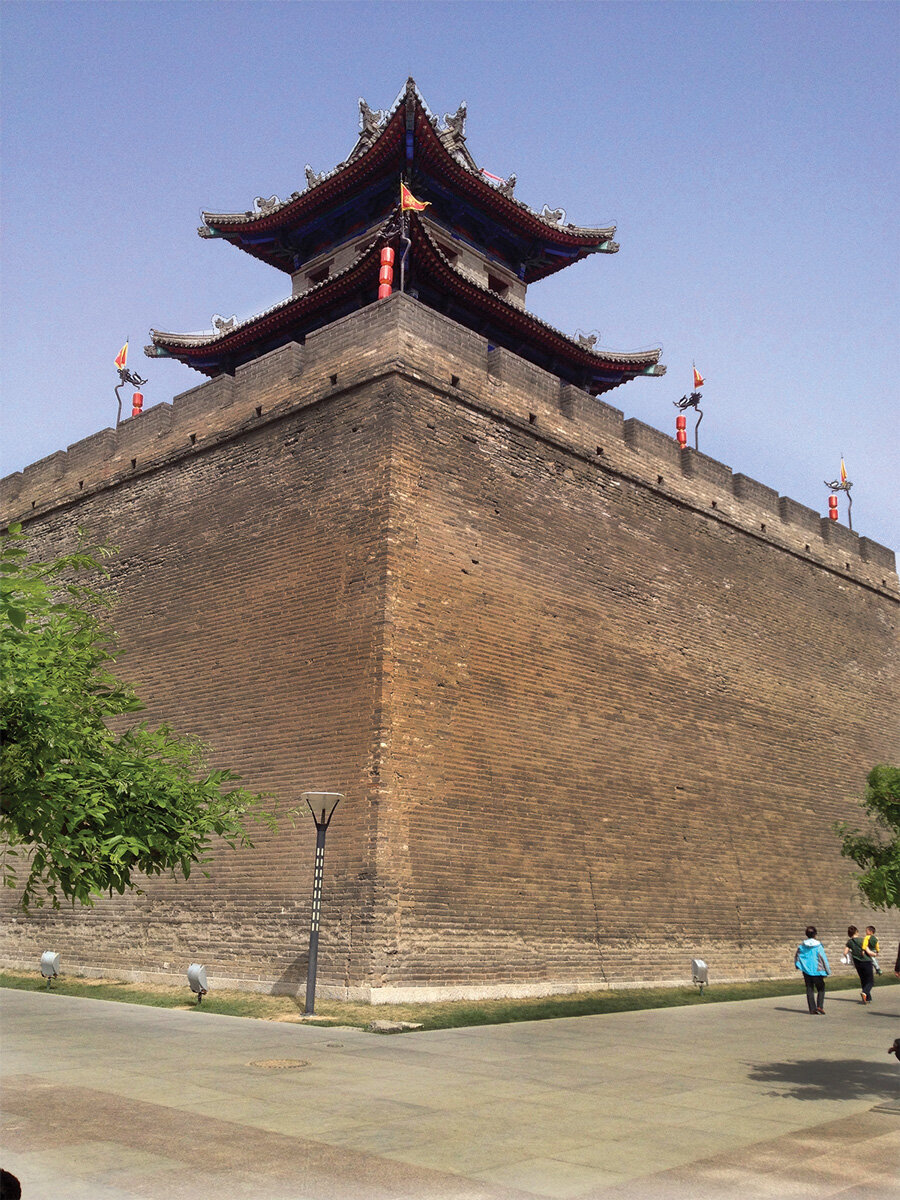Ancient Xi’an - Xi’an, China
What is It - Marco Polo's famous book the "Marvels of the World" described his decades long travels in the 14th century along the Silk Road that connected the Chinese empire of the Great Khan to Central Asia, India, the Byzantine Empire and the maritime cities of Italy. Trade of silk, gold, hides and other scarce resources flourished along the Silk Road which brought a diverse population of people to the city now known as Xi’an in China. Polo described the medieval city as follows: "It is in a great plain, where there are rivers and lakes and springs. Round it is a massive and lofty wall, five miles in compass, well built, with garnished battlements. And within this wall is the king's palace, so great and fine that no one could imagine one finer with splendid halls and chambers, painted and embellished with beaten gold."
Xi’an is an ancient city that dates to the days of the first Emperor Qin (200 BC), who buried the Terra Cotta Warriors and himself in the nearby countryside. Since the time of the Tang Dynasty from 618 to 907 AD, some form of wall has existed around the city. It was later expanded and turned into an impenetrable military fortification with a moat, drawbridges, hundreds of watchtowers and gates, and parapets to keep soldiers from falling off. There is no record of the walls ever being breached in battle even during the turmoil of the 20th century.
The Wall mentioned by Marco Polo remains intact today and is quite grand in scale. It is as high as a ten-story building with a solid stone facing and still surrounded in places by a large moat. On top, there is a broad thoroughfare about 40 feet wide for walking, biking, and local activities. I walked the entire eight and a half miles of the wall exploring both the top of the wall and outside it where there are many parks and playgrounds enjoyed by elders and children.
Today, Xi’an is a modern Chinese city of 2 million people with a hazy skyline of high rises, busy narrow streets, and many marketplaces. North of the City is a train station for China’s high-speed rail system which has opened the region to business investment and greater tourism opportunities. But the City also has dozens of temples and monuments worth seeing that date back in time. The Muslim Quarter and nearby marketplace are popular attractions as are the Bell Tower and the Drum Tower located close to the south gate of the wall.
Interesting Facts - On the southern side of the wall, cultural displays are sometimes installed in connection with various festivals and events. During a celebration of Chinese New Year in 2013, local artists constructed a 100-yard-long snake out of red globes to celebrate the "Year of the Snake".
How to Get Here - Xi’an is serviced by China Eastern, Air China and other regional carriers. It is easily reachable in several hours from Beijing, Shanghai, or Hong Kong. High speed rail is another alternative from all three locations and avoids travel time and airport delays.
Where to Stay - Xi’an has an abundance of international hotel rooms available at prices below $100 including a Westin, Shangri-La, Sofitel, Hilton, and a Sheraton.
Cost- It costs less than $10 per adult to visit the wall and bicycles are available for rental for slightly less.


